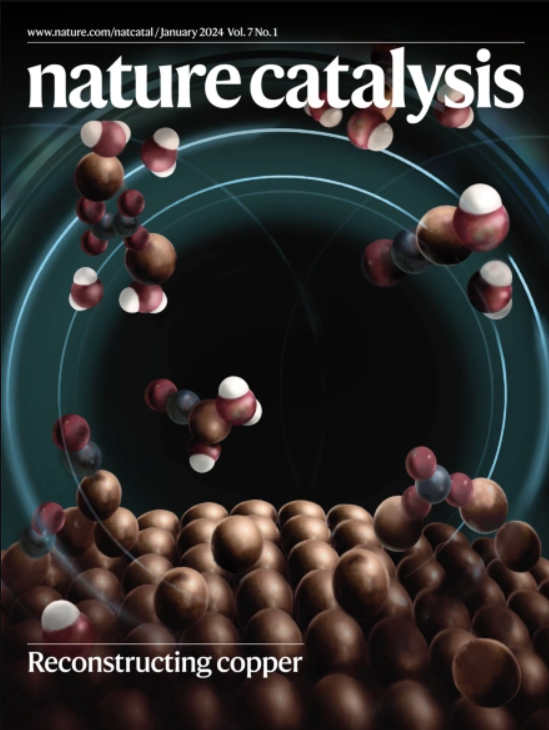通过基于描述符的高通量筛选,确定了一种高效的分子光催化CO2还原系统
IF 42.8
1区 化学
Q1 CHEMISTRY, PHYSICAL
引用次数: 0
摘要
分子金属配合物为开发人工光催化系统提供了机会。寻找高效的分子光催化系统涉及大量的光敏剂-催化剂组合,通过传统的试错方法非常耗时,而由于缺乏可靠的描述符,高通量虚拟筛选也不可行。在这里,我们提出了一种机器学习加速的高通量筛选方案,用于分子光催化CO2还原系统,使用包含光敏化,电子转移和催化步骤的多个描述符。该方案快速筛选了3,444个分子光催化体系,包括光敏剂和催化剂在相互作用过程中的180,000种构象,从而能够预测六个有希望的候选体系。然后,我们通过实验验证了筛选的光催化体系,最优的光催化体系达到了4,390的周转率。时间分辨光谱和第一性原理计算进一步验证了描述子在一定筛选范围内的相关性,也验证了偶极子耦合在触发动态催化反应过程中的作用。本文章由计算机程序翻译,如有差异,请以英文原文为准。


Identifying a highly efficient molecular photocatalytic CO2 reduction system via descriptor-based high-throughput screening
Molecular metal complexes offer opportunities for developing artificial photocatalytic systems. The search for efficient molecular photocatalytic systems, which involves a vast number of photosensitizer–catalyst combinations, is extremely time consuming via a conventional trial and error approach, while high-throughput virtual screening has not been feasible owing to a lack of reliable descriptors. Here we present a machine learning-accelerated high-throughput screening protocol for molecular photocatalytic CO2 reduction systems using multiple descriptors incorporating the photosensitization, electron transfer and catalysis steps. The protocol rapidly screened 3,444 molecular photocatalytic systems including 180,000 conformations of photosensitizers and catalysts during their interaction, enabling the prediction of six promising candidates. Then, we experimentally validated the screened photocatalytic systems, and the optimal one achieved a turnover number of 4,390. Time-resolved spectroscopy and first-principles calculation further validated not only the relevance of the descriptors within certain screening scopes but also the role of dipole coupling in triggering dynamic catalytic reaction processes. High-throughput computational screening of multicomponent molecular photocatalytic systems offers a strategy to minimize the screening of large numbers of photosensitizer–catalyst combinations. Here a machine learning-accelerated approach using multiple descriptors shows strong predictive power in experimentally validated systems for CO2 reduction.
求助全文
通过发布文献求助,成功后即可免费获取论文全文。
去求助
来源期刊

Nature Catalysis
Chemical Engineering-Bioengineering
CiteScore
52.10
自引率
1.10%
发文量
140
期刊介绍:
Nature Catalysis serves as a platform for researchers across chemistry and related fields, focusing on homogeneous catalysis, heterogeneous catalysis, and biocatalysts, encompassing both fundamental and applied studies. With a particular emphasis on advancing sustainable industries and processes, the journal provides comprehensive coverage of catalysis research, appealing to scientists, engineers, and researchers in academia and industry.
Maintaining the high standards of the Nature brand, Nature Catalysis boasts a dedicated team of professional editors, rigorous peer-review processes, and swift publication times, ensuring editorial independence and quality. The journal publishes work spanning heterogeneous catalysis, homogeneous catalysis, and biocatalysis, covering areas such as catalytic synthesis, mechanisms, characterization, computational studies, nanoparticle catalysis, electrocatalysis, photocatalysis, environmental catalysis, asymmetric catalysis, and various forms of organocatalysis.
 求助内容:
求助内容: 应助结果提醒方式:
应助结果提醒方式:


